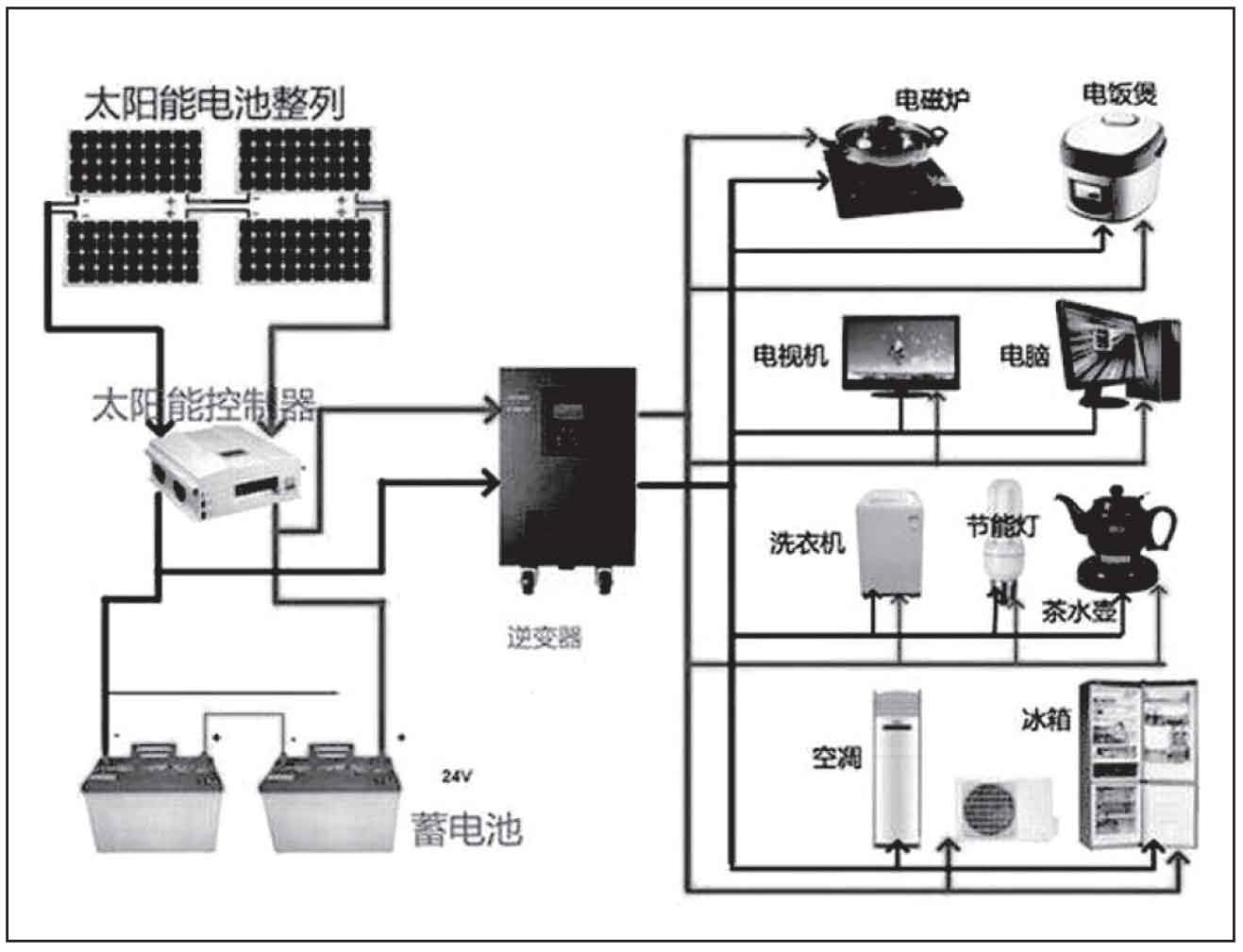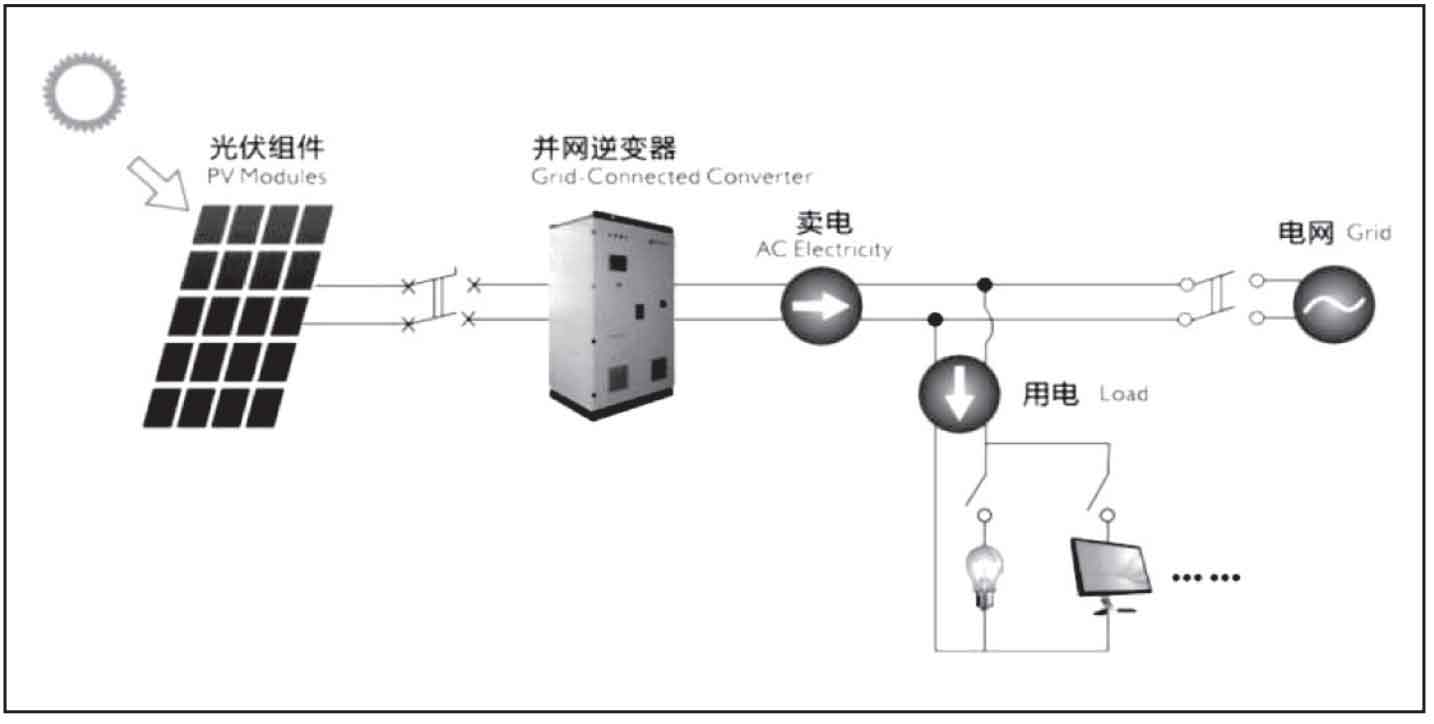In today’s rapidly developing global economy and technology, the scarcity of resources and environmental pollution have to some extent constrained the increasing pace of development. Solar energy, as a clean energy technology, has become a potential need for economic and technological development. With the increasing support for clean energy technology in China, many households have built household solar power generation devices to achieve self-sufficiency in electricity energy. At the same time, there has also been an excess of household solar power generation. Therefore, it is necessary to feed back the remaining electricity to the power grid to avoid waste of electricity energy. In response to this problem, relevant national departments have also introduced relevant policy support, However, feeding back the remaining electricity to the grid is an extremely complex technical problem that requires timely resolution in order to achieve grid connection.
Based on the policy of grid connection for household solar power generation issued by relevant national departments, this article analyzes and elaborates on grid connection technology, with a focus on discussing the grid connection control strategies for household solar photovoltaic power generation systems, in order to expand our understanding of the principles of solar power generation and grid connection technology.
1. Household solar photovoltaic power generation system
Generally speaking, there are two mainstream ways to achieve solar power generation, namely solar thermal power generation and solar photovoltaic power generation. The so-called solar thermal power generation refers to converting the radiant energy of sunlight into thermal energy of working fluids (such as water), and then using a heat engine (such as a steam turbine) to convert thermal energy into mechanical energy and then electrical energy. Solar photovoltaic power generation is corresponding to thermal power generation, which refers to a utilization method that directly converts light energy into electrical energy. The household solar photovoltaic power generation described belongs to the type of solar photovoltaic power generation.
1.1 System composition and principle
The household solar photovoltaic power generation system mainly consists of three parts: a solar battery pack (battery array), a solar controller (charging controller and discharge controller), and an inverter. The system is shown in Figure 1.

Solar panels (battery arrays) are the core components of power generation, whose function is to convert the radiant energy of the sun into electrical energy for household use or to transmit it to batteries. The battery will store electrical energy and release it when the light cannot meet the electricity demand. The solar controller plays a role in controlling the working state of the solar power generation system and protecting the charging and discharging processes of the battery (such as providing temperature compensation when the temperature difference is too large). Inverter is the key to grid connection technology, which converts direct current from solar power generation systems into alternating current and integrates it into the grid.
1.2 Analysis of System Functions
The research on household solar power generation technology belongs to small-scale power generation, usually belonging to photovoltaic power generation. For general solar photovoltaic power generation systems, the basic process is to directly convert solar energy into electrical energy using solar arrays. According to different usage methods, there are various ways of transmitting and converting the generated electrical energy, and the corresponding types of converters also vary, For example, it can be a direct current/alternating current conversion from solar cells to the power grid, or a two-stage conversion process can be formed by first undergoing DC/DC conversion and then DC/AC conversion. For household low-power photovoltaic power generation systems, due to the relatively low actual output voltage, it is usually necessary to first undergo DC/DC conversion and boost voltage, and then use DC/AC inverter to achieve energy transmission.
The general functions of household solar power generation systems can be divided into four types, namely direct power supply to DC loads, battery energy storage and charging, power supply to AC loads through inverters, or power transmission to the external power grid.
(1) Household solar energy directly supplies power to DC based loads: Due to the direct current generated by solar photovoltaic power generation, DC/DC charging and discharging controllers can be used to supply power to DC based loads, such as solar street lighting systems.
(2) Household solar energy charging to battery storage: The function of battery storage charging is to store the electrical energy emitted by the solar panel when there is light, and then release it when needed.
(3) Household solar energy supplies power to AC loads: In the presence of light, the solar battery pack is able to charge the battery, and the battery inverts the current through an independent inverter to supply power to the AC load.
(4) Household solar power is used to transmit electricity to the external power grid: The direct current energy generated by the solar power generation system is converted into alternating current through an inverter and transmitted to the public power grid.
2. Home solar grid connection technology
The household solar photovoltaic power generation system is like a small power plant, and its grid connection must also meet the basic grid connection requirements. However, due to the fact that the solar cell array emits direct current, it must undergo a process of converting direct current into alternating current, namely the inverter process, which is the key to the grid connection of solar photovoltaic power generation.
2.1 Analysis of the working process of the inverter
Due to the influence of external environmental conditions, solar photovoltaic power generation has uncertain characteristics such as intermittency and volatility. In order to connect to the transmission and distribution grid, strict parameter control must be carried out to ensure the safe and stable operation of the system. An inverter is an electrical energy conversion device that converts direct current into alternating current. In a household solar power generation system, the low-voltage direct current output of the solar power generation system is converted into 220V alternating current through the use of this energy conversion device, in order to supply conventional AC load or directly integrate into the power grid. When there is normal sunlight, the solar cell array can directly convert light energy into electrical energy, generate a certain voltage of direct current, and then convert it into 220V AC power for electrical equipment use in the DC/AC inverter. If the electricity generated by the household solar power generation system exceeds the load of the household electrical equipment, the remaining electricity can be fed to the external AC power grid through a single-phase inverter conversion device, which is the process of transmitting electricity to the grid. On the contrary, if the electricity generated cannot meet the needs of the household electrical equipment, the interconnected system can input electricity from the external AC power grid. The basic principle is shown in Figure 2.

The process of grid connection in a household solar power generation system essentially involves converting direct current into alternating current, converting direct current into single-phase 220 alternating current, as described in the formula. The principle structure of the single-phase grid connected inverter used is shown in Figure 3.

The single-phase grid connected inverter system consists of a DC input port, a voltage stabilizing filter capacitor, a single-phase full bridge inverter circuit, and a grid connected filter. The inverter system has a simple structure and high efficiency, but all control algorithms of the entire solar power generation system are concentrated in the inverter link, which leads to relatively complex control systems in practical applications.
2.2 Analysis of solar grid connection requirements
Due to the inherent amplitude, frequency, and phase of the power energy transmitted by the power grid. From the technical requirements for grid connected operation, it can be seen that single-phase grid connected technology mainly has the following three requirements: firstly, the phase sequence of the generator is consistent with the grid; The second is that the frequency of the generator is the same as that of the power grid; The third is that the excitation potential kinetic energy of the generator is equal to the pressure of the power grid, and the phase is consistent. If the above multiple conditions are not met at the same time, it is very easy to cause serious consequences such as circuit disorder. It can lead to poor quality of power transmission and distribution in the power grid, or even serious safety accidents in power production.
2.3 Solar grid connection control strategy
The goal of grid connected inverter control for household solar power generation systems is to control the output current of single-phase grid connected inverters to a specific sinusoidal current through effective control strategies and algorithms. Common examples are shown in the formula, which requires the output AC power of grid connected inverters to be consistent with the external power grid in terms of amplitude, frequency, phase, and phase sequence. Therefore, it is necessary to develop scientific and reasonable control strategies to achieve the grid connected control goal.
In summary, the battery array of household solar power generation systems outputs low-voltage direct current, which must undergo specific transformations to be connected to the external power grid, such as the need for technical support such as inverter, control, detection, and protection. Of course, under normal circumstances, this single-phase inverter must coordinate and cooperate with the power generation system controller to jointly control the solar power generation system.
3. Conclusion
Household solar power generation technology has been widely developed and applied. This article introduces the structure and principle of photovoltaic power generation systems and their corresponding grid connection technologies based on the simplest household solar photovoltaic power generation system. From the research results, it can be seen that the solar grid connection process must be strictly controlled to ensure that the AC parameters output by the inverter meet the grid connection requirements, reduce impact and interference on the power grid. At the same time, the household solar power generation system must also be able to cope with the uncertainty brought about by external environmental changes, such as changes in light intensity, temperature, and household load. Specific adjustment and control technologies must be used to achieve the optimal operation goal of the power generation system. I believe that through the mature development and application accumulation of related technologies, solar power generation will be more widely applied, providing a powerful way for human clean energy utilization.
